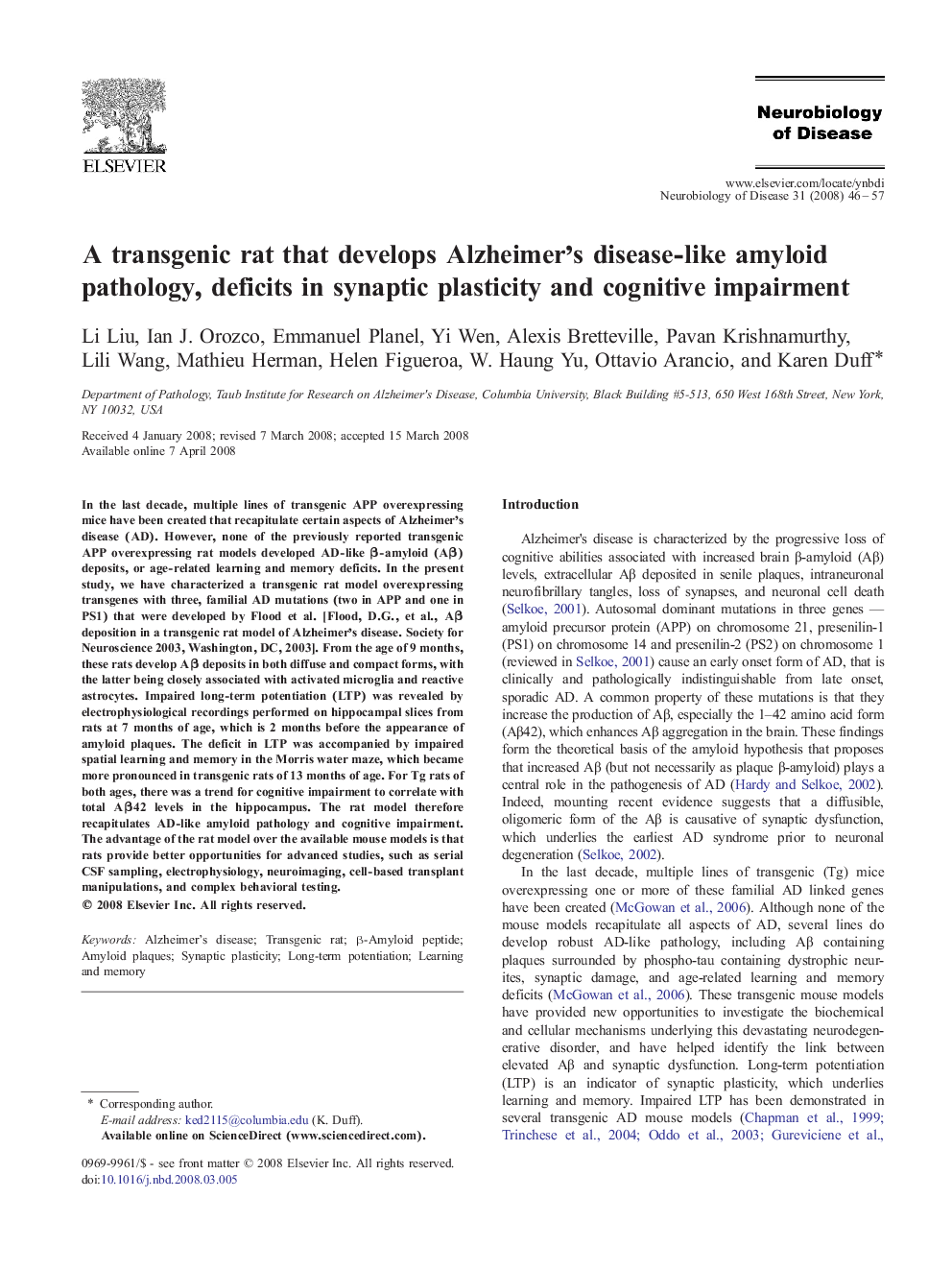| Article ID | Journal | Published Year | Pages | File Type |
|---|---|---|---|---|
| 3070403 | Neurobiology of Disease | 2008 | 12 Pages |
In the last decade, multiple lines of transgenic APP overexpressing mice have been created that recapitulate certain aspects of Alzheimer's disease (AD). However, none of the previously reported transgenic APP overexpressing rat models developed AD-like β-amyloid (Aβ) deposits, or age-related learning and memory deficits. In the present study, we have characterized a transgenic rat model overexpressing transgenes with three, familial AD mutations (two in APP and one in PS1) that were developed by Flood et al. [Flood, D.G., et al., Aβ deposition in a transgenic rat model of Alzheimer's disease. Society for Neuroscience 2003, Washington, DC, 2003]. From the age of 9 months, these rats develop Aβ deposits in both diffuse and compact forms, with the latter being closely associated with activated microglia and reactive astrocytes. Impaired long-term potentiation (LTP) was revealed by electrophysiological recordings performed on hippocampal slices from rats at 7 months of age, which is 2 months before the appearance of amyloid plaques. The deficit in LTP was accompanied by impaired spatial learning and memory in the Morris water maze, which became more pronounced in transgenic rats of 13 months of age. For Tg rats of both ages, there was a trend for cognitive impairment to correlate with total Aβ42 levels in the hippocampus. The rat model therefore recapitulates AD-like amyloid pathology and cognitive impairment. The advantage of the rat model over the available mouse models is that rats provide better opportunities for advanced studies, such as serial CSF sampling, electrophysiology, neuroimaging, cell-based transplant manipulations, and complex behavioral testing.
